1.Shiba-inu dog
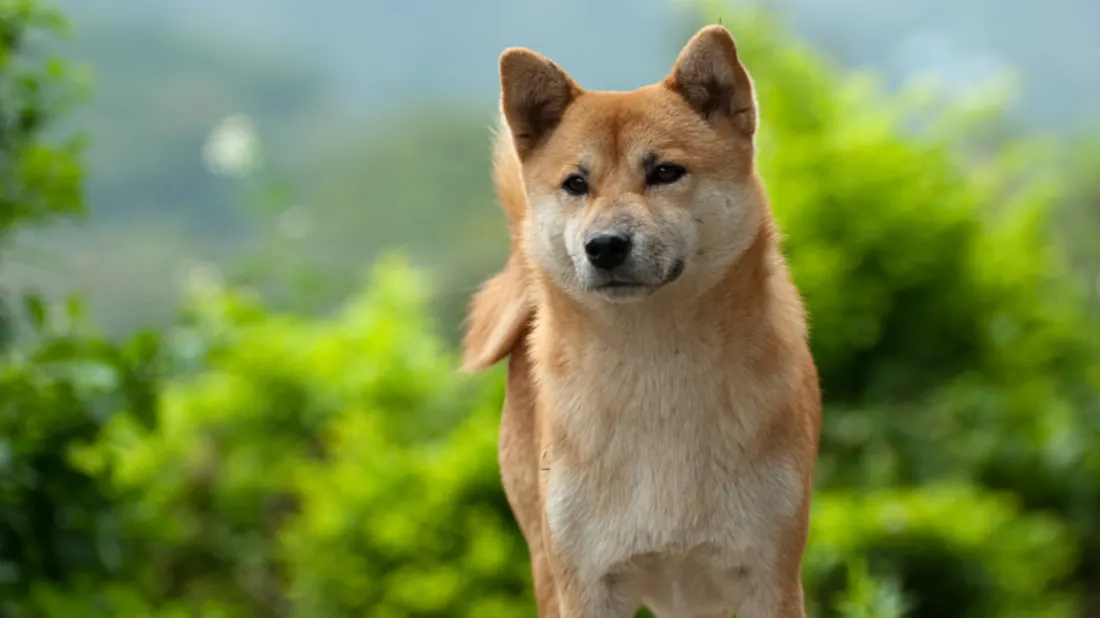
The Shiba Inu (柴犬, Japanese: [ɕiba̠ inɯ̟ᵝ]) is a Japanese breed of hunting dog. A small-to-medium breed, it is the smallest of the six original and distinct spitz breeds of dog native to Japan.
A small, agile dog that copes very well with mountainous terrain, the Shiba Inu was originally bred for hunting. It looks similar to and is often mistaken for other Japanese dog breeds like the Akita Inu or Hokkaido, but the Shiba Inu is a different breed with a distinct bloodline, temperament, and smaller size than other Japanese dog breeds.
Appearance
The Shiba’s frame is compact with well-developed muscles. Males are 35 to 43 cm (14 to 17 in) at the withers. Females are 33 to 41 cm (13 to 16 in). The preferred size is the middle of the range for each sex. Average weight at preferred size is approximately 10.5 kg (23 lb) for males, 8 kg (18 lb) for females. Bones are moderate.
The Shiba is double-coated, with the outer coat being stiff and straight and the undercoat soft and thick. The fur is short and even on the fox-like face, ears, and legs. Guard hairs stand off the body and are about 4 to 5 cm (1 1⁄2 to 2 in) long at the withers. The purpose of the guard hairs is to protect their underlying skin and to repel rain or snow. Tail hair is slightly longer and stands open in a brush. Their tails are a defining characteristic and make them stand apart from other dog breeds. Their tails help to protect them from the harsh winter weather. When they sleep, Shiba Inus curl up and use their tails to shield their face and nose in order to protect their sensitive areas from the cold. Shibas may be red, black and tan, or sesame (red with black-tipped hairs), with a cream, buff, or grey undercoat. They may also be white (cream), though this colour is considered a “major fault” by the American Kennel Club and should never be intentionally bred in a show dog, as the required markings known as “urajiro” (裏白) are not visible; “Urajiro” literally translates to “underside white”. Conversely, a white (cream) coat is perfectly acceptable according to the British Kennel Club breed standard.
The urajiro (cream to white ventral colour) is required in the following areas on all coat colours: on the sides of the muzzle, on the cheeks, inside the ears, on the underjaw and upper throat inside of legs, on the abdomen, around the vent and the ventral side of the tail. On reds: commonly on the throat, forechest, and chest. On blacks and sesames: commonly as a triangular mark on both sides of the forechest.
2.Hokkaido dog
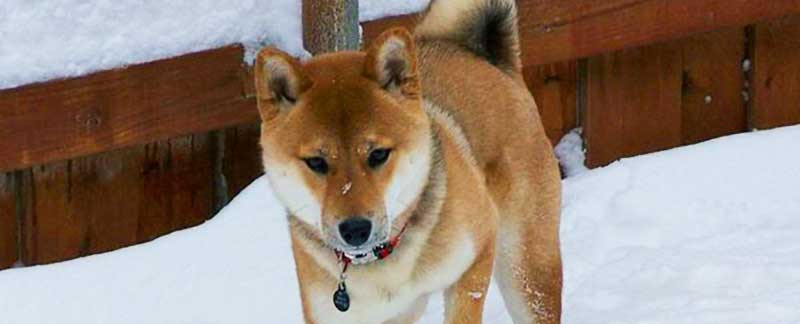
The Hokkaido (北海道犬 Hokkaidō-inu or Hokkaidō-ken) is a breed of dog originating from Japan. Other names for the breed include Ainu-ken, Seta, Ainu dog. In Japan, its name is sometimes shortened to Dō-ken (道犬). The Hokkaido is native to the prefecture of the same name in Japan.
Appearance
The breed is medium in size, with small, triangular, upright ears. The small eyes have a rising triangular outline. The Hokkaido has a coat of long, stiff fur, and a second, shorter coat of soft fur. Colours include red, white, black, brindle, sesame, black and tan, and wolf-grey. Males are typically 50 cm (20 in) tall at the withers, females slightly shorter, with body masses in the 20 kg (44 lb) range. Dogs bred on continents outside of their native Japan may be smaller.
3.Akita-inu dog
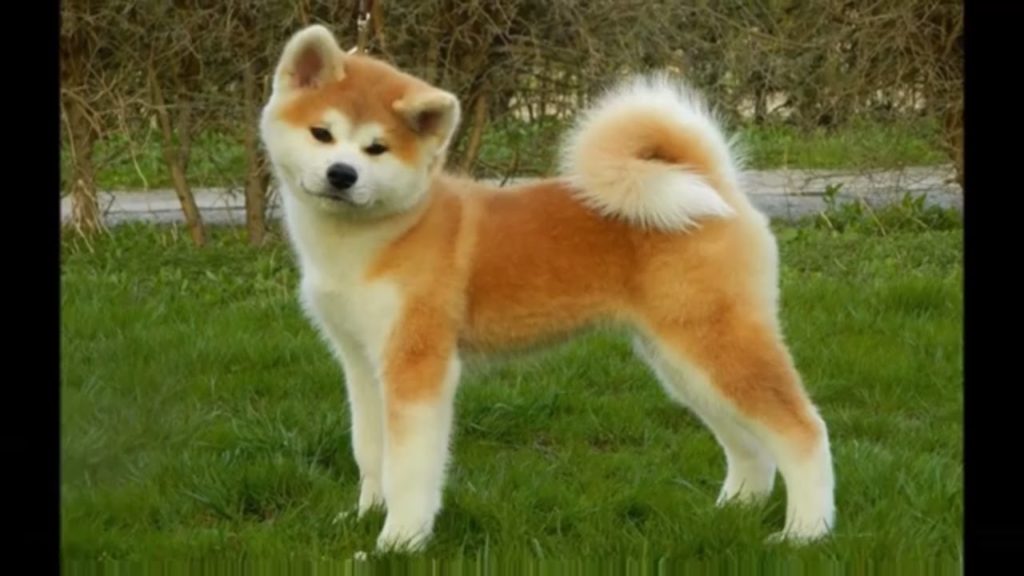
The Akita (秋田犬 Akita-inu, Japanese pronunciation: [akʲita.inɯ]) is a large breed of dog originating from the mountainous regions of northern Japan. There are two separate varieties of Akita: a Japanese strain, commonly called Akita Inu (inu means dog in Japanese) or Japanese Akita, and an American strain, known as the Akita or American Akita. The Japanese strain comes in a narrow palette of colours, with all other colours considered atypical of the breed, while the American strain comes in all dog colours. The Akita has a short double-coat similar to that of many other northern spitz breeds such as the German Shepherd or Siberian Husky, but long-coated dogs can be found in many litters due to a recessive gene.
The Akita is a powerful, independent and dominant breed, commonly aloof with strangers but affectionate with family members. As a breed, Akitas are generally hardy, but they have been known to be susceptible to various genetic conditions and can be sensitive to certain drugs.
In all countries except the United States, the Japanese and American strains of Akita are considered two separate breeds. In the United States, however, the two strains are considered a single breed with differences in type. For a while, the American strain of Akita was known in some countries as the Great Japanese Dog. Both forms of Akita are probably best known worldwide from the true story of Hachikō, a loyal Akita who lived in Japan before World War II.
Read More about: Akita dog breeds.
4.Shikoku inu
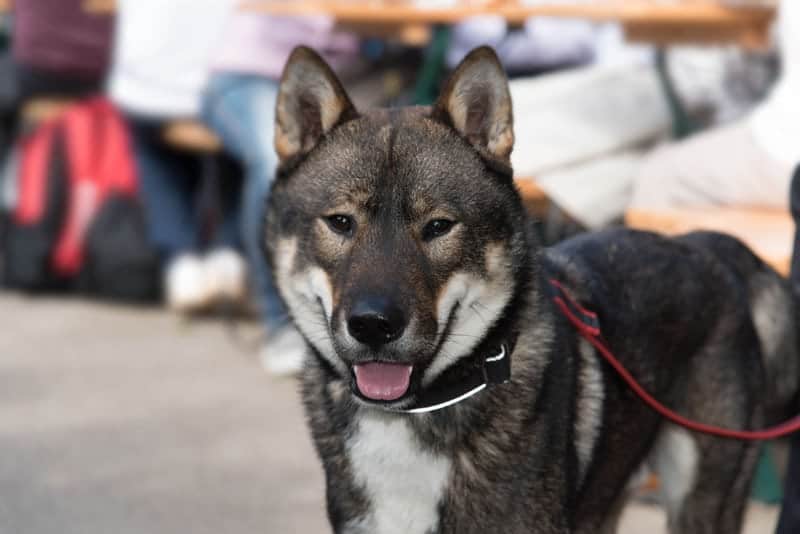
The Shikoku (四国犬 Shikoku-ken, alternative names: Kochi-ken) is a Japanese breed of dog from Shikoku island that is similar to a Shiba Inu. The Shikoku was recently added as a recognized breed of the American Kennel Club as an AKC FSS standard [ Foundation Stock Service ], it is recognized by the Japan Kennel Club, an organization recognized by AKC as an official foreign registry (AKC recognizes the Shiba Inu, however). The Shikoku is also in the Canadian Kennel Club Hound group and the United Kennel Club, awaiting full recognition. In 1937 the Japanese Crown recognized the Shikoku dog as a living “natural monument” of Japan.
Varieties
Three varieties of this breed have been identified: the Awa, the Hongawa, and the Hata all named after the area where they were bred on the island of Shikoku. The Hongawa breeding area is the most remote and least accessible, the dogs of the Hongawa line maintained the highest degree of purity and was considered the best type. Read More…
5.Kishu Inu
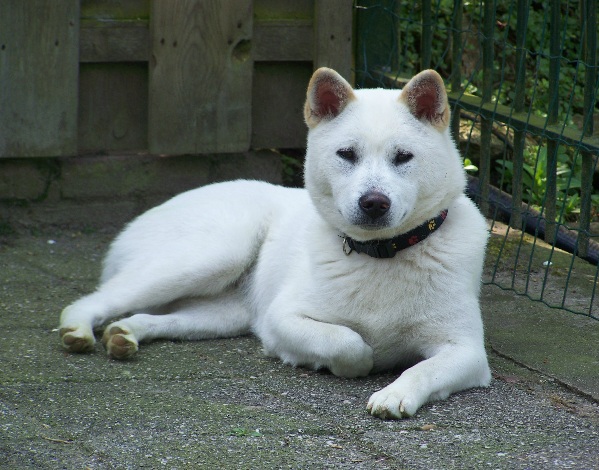
The Kishu (紀州犬 Kishū-Inu), sometimes called Kishu Ken or Kishu Inu, is a Japanese breed of dog. It is descended from ancient medium-sized breeds and named after the Kishu region, now Mie Prefecture and Wakayama Prefecture. This breed is similar to the Hokkaido, Shikoku and the Kai Ken. Sometimes it is mistaken for the white variant of Hokkaido because of very similar appearance. The Japanese originally used this breed of dog for boar and deer hunting. Like the Shiba, they are often quiet. Kishu will stalk prey quietly rather than bark.
Appearance
The Kishu stands 17-22 inches (43–55 cm) tall, averages 30–60 pounds and is considered a medium-sized dog. The standard only permits solid coloured dogs to be shown. Accepted show colours are white, sesame, red, and black & tan (NIPPO only). White is the most common colour in the breed. There is only one standard which illustrates white as the preferred coat colour. The nose colour is black, but with the white coats, flesh-coloured noses are permitted. The bite is either scissor or a level bite. The tail is either carried in a sickle or curled over the back. The coat is short, straight, and coarse with a thick undercoat. There is fringe on the cheeks and tail. The ears incline forward and are smaller rather than larger, but should maintain proportion with the head and dog overall. This breed is tough, agile and friendly.
6.Kai – Ken
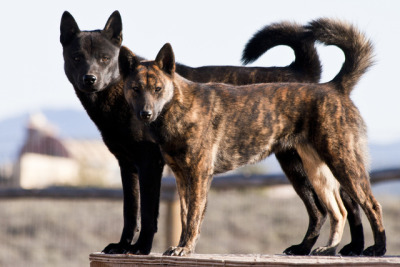
The Kai Ken (甲斐犬, also called the Tora Inu or Tiger Dog) is a breed of dog from Japan where it is a national monument. It is a rare dog even in its native land and is one of the six native Japanese dog breeds protected by the Nihon Ken Hozonkai.
Appearance
The Kai Ken is a medium-sized dog with a wedge-shaped head and pricks ears. Males are typically 18 to 22 inches at the shoulder, while the females are slightly smaller, 17 to 20 inches at the shoulder. The tail may be curled over the back, or carried in a sickle position. Limbs should be strong and hocks should be well developed reflecting the dogs’ history of mountain life. The coat is of harsh texture, medium length, and comes in various shades of brindle (tiger stripes). The red is the Aka-tora, the black is the Kuro-tora and between them, the Chu-tora. Puppies are born a solid colour and their brindle markings develop as they age, sometimes taking as long as five years before fully showing.
History
The Kai Ken was split off from the Nihon Ken (Japanese Dog) landrace during the creation of the Nihon Ken Hozonkai (NIPPO) and named after Kai Province in Yamanashi Prefecture where the breed is said to have originated.
Being an agile and effortless climber, the Kai Ken was used to hunt in steep mountainous terrain in Yamanashi where’s its primary quarry was the Japanese serow (Kamoshika), deer, wild boar, and occasionally bear.
After the creation of NIPPO in 1928, the Kai Ken has designated a national monument in Japan in 1933. In 1931 the Kai Ken Aigokai (KKA) was formed and became the primary Preservation Society for the breed in Japan and still is today.
7.Japanese Terrier
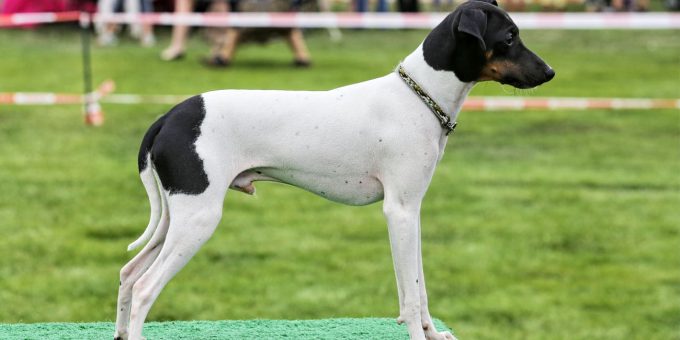
The Japanese Terrier (日本テリア Nihon Teria) is a small terrier native to Japan. It is believed to be descended from the progeny of fox terrier types, pointers and indigenous Japanese dogs. This dog is also known as the Nippon Terrier. The breed is rare, even in Japan.
Appearance
The Japanese Terrier is a balanced, square dog, most often black head with a predominantly white body that has little black spots. It is 8 to 13 inches tall (to shoulders) and weighs 5 to 9 pounds, its ears are high set and fold forward, and the coat is short, slick and fine. Its tail can be docked.
8.Tosa Inu
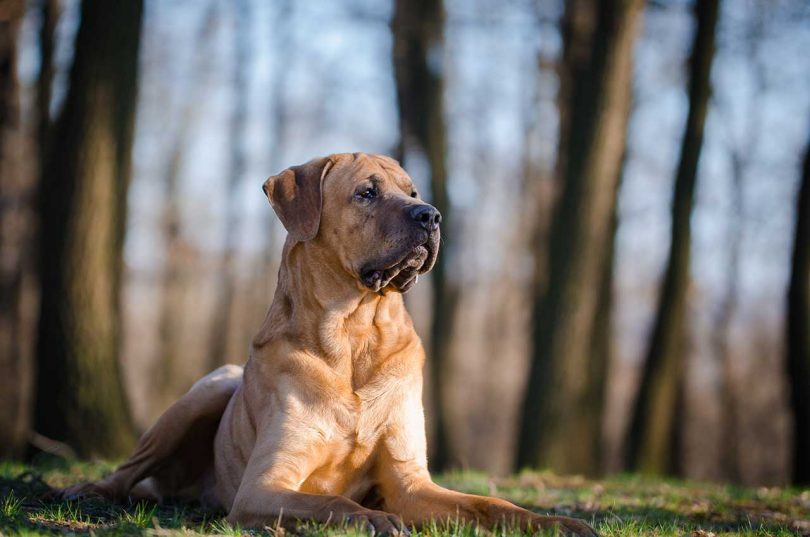
The Tosa (土佐, also called the Tosa Inu, Tosa-Ken or Japanese Mastiff) is a breed of dog of Japanese origin that is considered rare. It was originally bred in Tosa, Shikoku (present-day Kōchi) as a fighting dog and is the only breed still used (legally) in Japanese dogfighting. Ownership is restricted in some countries as a dangerous breed.
Appearance
The Tosa varies considerably in size, with the Japanese-bred dogs tending to be about half the size of those bred outside the country. The Japanese breed generally weighs between 36 and 61 kilograms (80 and 135 lb), while the non-Japanese breeders have focused on dogs that weigh from 60 to 90 kg (130 to 200 lb) and stand 62 to 82 cm (24 to 32 in) at the withers. The coat is characterized by its short and smooth appearance and is often red brindle or fawn, but occasionally it can be a dull black. Maintenance of the coat is usually minimal. Dogs can occasionally tip the scale at 91 kilograms (200 lb). In Japan, they are considered the equivalent of Sumo wrestlers and are even depicted in wrestling accoutrement.
History
This breed originated in the second half of the 19th century. The breed started from the native Shikoku-Inu (an indigenous dog weighing about 25 kilograms (45 pounds) and standing about 55 centimetres high). These dogs were crossed with European dog breeds, such as the Old English Bulldog in 1872, English Mastiff in 1874, Saint Bernard and German Pointer in 1876, Great Dane in 1924, and Bull Terrier. The aim was to breed a larger, more powerful dog. The heyday of Tosa breeding was between 1924 and 1933 when it was said that there were more than 5,000 Tosa breeders in Japan. Read More…
9.Japanese Spitz
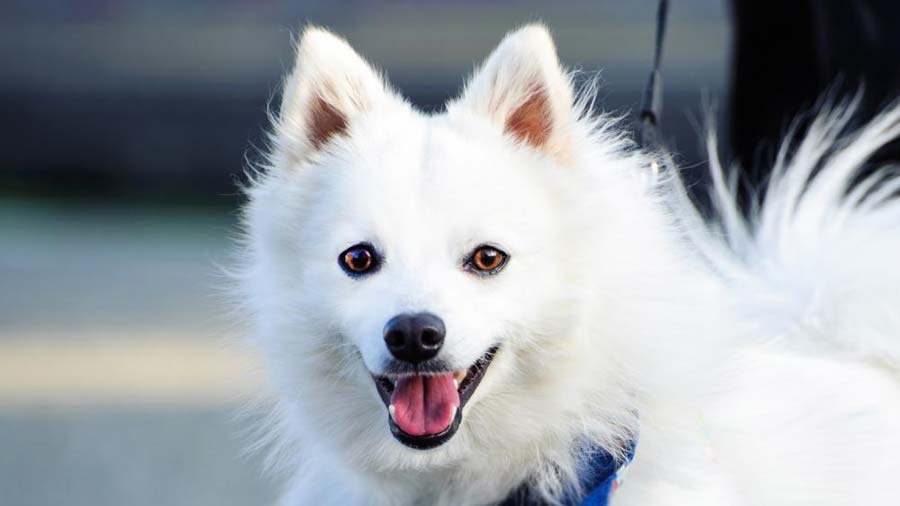
The Japanese Spitz (日本スピッツ Nihon Supittsu) is a small to medium breed of dog of the Spitz type. The Japanese Spitz is a companion dog and pet. There are varying standards around the world as to the ideal size of the breed, but they are always larger than their smaller cousins, the Pomeranian. They were developed in Japan in the 1920s and 1930s by breeding a number of other Spitz-type dog breeds together. They are recognized by the vast majority of the major kennel clubs, except the American Kennel Club due to it being of similar appearance to the white Pomeranian, American Eskimo Dog and Samoyed. While they are a relatively new breed, they are becoming widely popular due to their favourable temperament and other features.
The major health concern is patellar luxation, and a minor recurring concern is that the breed can be prone to runny eyes. They can act as reliable watchdogs, but are a type of companion dog and prefer to be an active part of the family. Although they might appear fluffy, they are a low maintenance breed as dirt does not stick to the coat.
Appearance
The Japanese Spitz is a small dog, around 33 cm (13 ins) at the withers, with a somewhat square body, deep chest, and a very thick, pure white double coat. The coat consists of an outer coat that stands off from the soft inner coat, with fur shorter on the muzzle and ears as well as the fronts of the forelegs and the hindlegs. A ruff of longer fur is around the dog’s neck. It has a pointed muzzle and small, triangular shape prick ears (ears that stand up.) The tail is long, heavily covered with long fur, and is carried curled over and lying on the dog’s back. The white coat contrasts with the black pads and nails of the feet, the black nose, and the dark eyes. The large oval (akin to a ginkgo seed) eyes are dark and slightly slanted with white eyelashes, and the nose and lips and eye rims are black. The face of the Japanese Spitz is wedge-shaped.
They share a common resemblance with the white Pomeranian, Samoyed and American Eskimo Dog.
History
Dog breeders in Japan in the 1920s and 1930s created the Japanese Spitz by crossbreeding a number of other Spitz breeds to develop the Japanese Spitz. Breeders began with white German Spitz dogs, originally brought over from northeastern China to Japan; they were first exhibited at a dog show in Tokyo in 1921. Between 1925 and 1936 various small white Spitz breeds were imported from around the world and crossed into the developing breed, with the goal of producing an improved breed. The final Standard for the breed was written after World War II, and accepted by the Japan Kennel Club. The breed gained popularity in Japan in the 1950s, and was exported to Sweden in the early 1950s. From there the breed went to England, and the Kennel Club recognized the Japanese Spitz in 1977 in the Utility Group. The Japanese Spitz has spread around the world including to India, Australia, and the United States and is recognized by most of the major kennel clubs in the English speaking world; by the Canadian Kennel Club in Group 6, Non-Sporting, by the New Zealand Kennel Club (Non-Sporting Group), by the Australian National Kennel Council in Group 7 (Non-Sporting), and by the United Kennel Club (U.S.) in the Northern Breeds Group. The American Kennel Club does not recognize the Japanese Spitz due to its being close in appearance to a U.S. developed Spitz breed, the American Eskimo Dog. The breed is also recognized by minor registries and clubs.
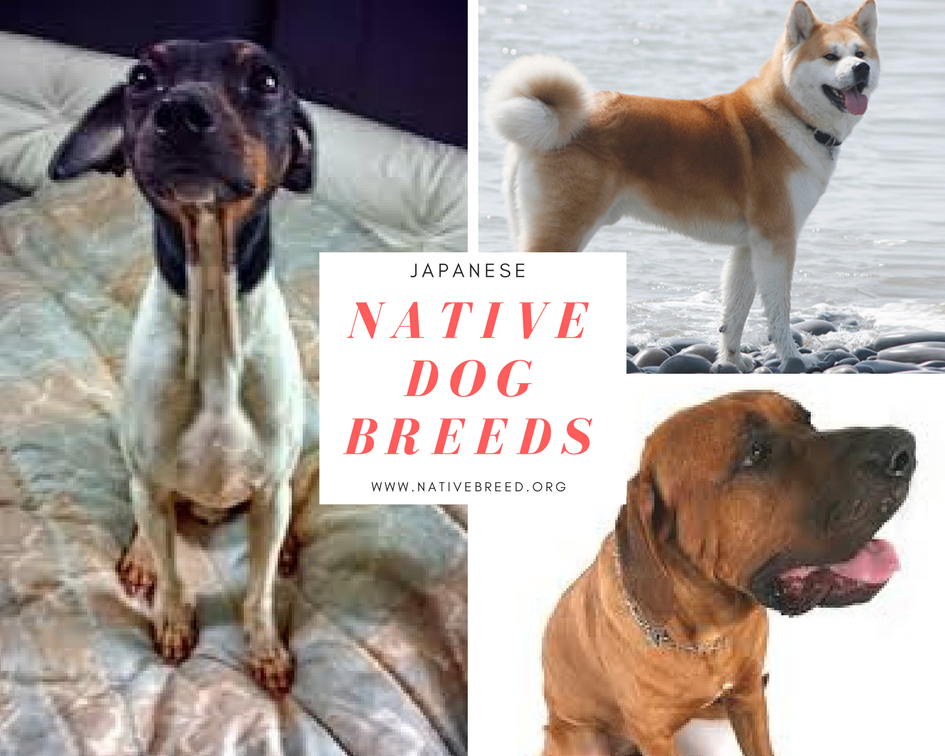
I see almost nothing online about the Yakushima inu. I saw it on a documentary on NHK. It does not appear similar to the Spitz breeds and seems to be a very friendly and handsome dog It was bred for hunting. I understand it is pretty rare. Are they found in other countries? Thanks for any info.